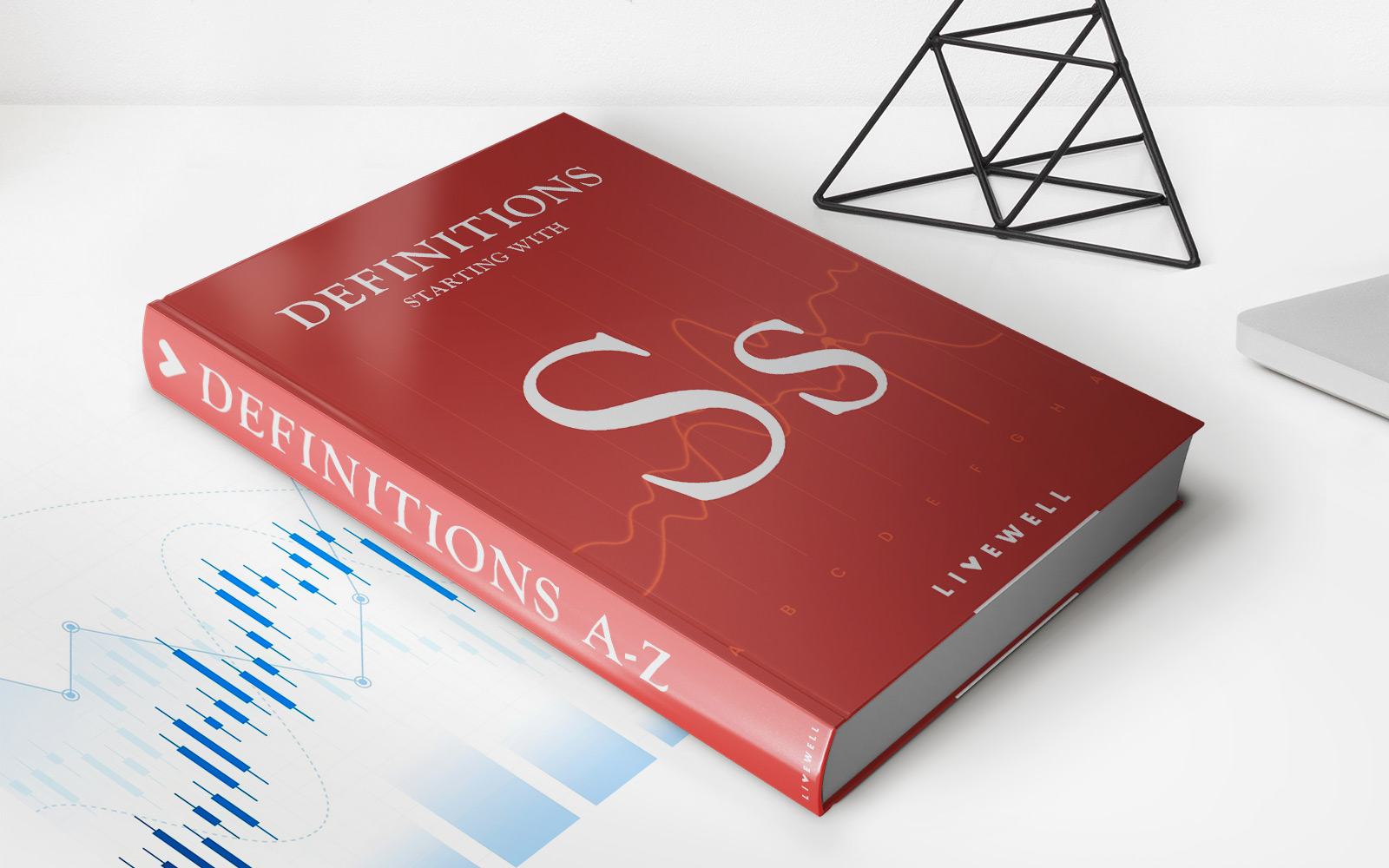

Finance
What Is A Statement Savings Account
Modified: December 30, 2023
Learn about statement savings accounts and how they can help you manage your finances effectively. Find out the benefits and features of these accounts and start saving today.
(Many of the links in this article redirect to a specific reviewed product. Your purchase of these products through affiliate links helps to generate commission for LiveWell, at no extra cost. Learn more)
Table of Contents
- Introduction
- Definition of a Statement Savings Account
- Purpose of a Statement Savings Account
- Features and Benefits of a Statement Savings Account
- Minimum Balance Requirements
- Interest Rates and Calculations
- Withdrawal and Deposit Options
- Comparison to Other Types of Savings Accounts
- Considerations before Opening a Statement Savings Account
- Conclusion
Introduction
A statement savings account is a popular financial instrument that allows individuals to save money while earning interest on their deposits. It is a type of savings account offered by banks and credit unions, designed to help people build a financial cushion for future needs and goals. With the convenience of online banking and regular statements, statement savings accounts provide individuals with a tangible record of their savings progress.
Whether you’re saving for a down payment on a home, planning for retirement, or simply looking to build an emergency fund, a statement savings account can be a valuable tool in achieving your financial goals. It provides a safe and secure place to keep your money, while also allowing it to grow over time.
In this article, we will explore the features and benefits of a statement savings account, how it differs from other types of savings accounts, and what you should consider before opening one. By understanding the ins and outs of a statement savings account, you’ll be better equipped to make informed financial decisions that can help you achieve long-term financial success.
Definition of a Statement Savings Account
A statement savings account is a type of bank account that allows individuals to deposit and save money while earning interest on their balance. It is called a “statement” savings account because the account holder receives regular statements, typically on a monthly basis, that provide a detailed record of their transactions and the interest earned.
Unlike a checking account, which is primarily used for everyday transactions such as depositing and withdrawing funds, a statement savings account is specifically designed for accumulating and growing savings over time. It offers a higher interest rate compared to a checking account, making it an attractive option for individuals who want their money to work for them.
Opening a statement savings account generally requires providing identification documents, such as a driver’s license or passport, as well as a minimum initial deposit. This deposit is the amount of money that is required to open the account, and it varies from one financial institution to another. Once the account is open, individuals can make additional deposits and withdrawals as needed, keeping in mind any minimum balance requirements and withdrawal restrictions that may apply.
With the advancement of technology, many banks now offer online banking services for their statement savings accounts. This allows account holders to manage their savings, view transaction history, and track their progress towards their savings goals conveniently from their computer or mobile device.
In summary, a statement savings account provides individuals with a convenient and secure means of saving money and earning interest. It allows for easy tracking of transactions and provides a record of account activity through regular statements. This type of account is ideal for those looking to grow their savings while maintaining easy access to their funds.
Purpose of a Statement Savings Account
A statement savings account serves several purposes, all of which are centered around the goal of helping individuals save money and achieve their financial objectives. Here are some of the primary purposes of a statement savings account:
- Emergency Fund: One of the main purposes of a statement savings account is to act as an emergency fund. Life is unpredictable, and unexpected expenses can arise at any time, such as medical bills, car repairs, or home maintenance. By having a dedicated savings account, individuals can set aside funds specifically for emergencies, providing a financial safety net and avoiding the need to rely on credit cards or loans.
- Short-Term Savings Goals: Statement savings accounts are also useful for achieving short-term savings goals. Whether it’s saving for a vacation, a new gadget, or a special event, having a separate account can help individuals stay focused on their savings target. By regularly depositing money into the account, individuals can steadily work towards their goals and enjoy the satisfaction of seeing their savings grow over time.
- Long-Term Savings Goals: In addition to short-term goals, statement savings accounts can be instrumental in achieving long-term financial goals. Whether it’s saving for a down payment on a home, funding education expenses, or planning for retirement, a dedicated savings account allows individuals to accumulate funds over an extended period. By taking advantage of compound interest, which helps money grow over time, individuals can maximize the potential of their savings.
- Financial Security: Building a statement savings account contributes to overall financial security. Having a substantial savings balance provides peace of mind knowing that there is a financial buffer in case of unexpected events or hardships. It can help reduce financial stress and provide a sense of stability, allowing individuals to weather financial storms more confidently.
- Teaching Financial Discipline: Opening a statement savings account can also serve as a tool for teaching financial discipline and responsible money management. By setting goals, regularly contributing to the account, and resisting the temptation to withdraw funds for unnecessary expenses, individuals can develop good saving habits and learn valuable financial skills that can benefit them throughout their lives.
In summary, a statement savings account serves the purpose of helping individuals save money, whether it’s for emergencies, short-term goals, or long-term aspirations. It promotes financial security, teaches financial discipline, and provides a means to systematically work towards achieving financial objectives. By having a dedicated savings account, individuals can take control of their finances and work towards a more stable and prosperous future.
Features and Benefits of a Statement Savings Account
A statement savings account offers several features and benefits that make it an attractive option for individuals looking to save and grow their money. Here are some of the key features and benefits of a statement savings account:
- Interest Earnings: One of the primary benefits of a statement savings account is the ability to earn interest on the deposited funds. While the interest rates may vary depending on the financial institution and prevailing market conditions, statement savings accounts generally offer higher interest rates compared to checking accounts. This means that individuals can earn passive income on their savings, allowing their money to work for them over time.
- Deposit Protection: Statement savings accounts typically offer deposit protection up to a certain limit. In many countries, financial institutions are regulated and insured by government-backed programs, such as the Federal Deposit Insurance Corporation (FDIC) in the United States, which provides deposit insurance to safeguard customers’ funds. This protection ensures that even in the unlikely event of a bank failure, individuals’ deposited funds are safe and will be reimbursed up to the specified limit.
- Easy Access to Funds: While a statement savings account is designed to encourage saving, it also provides easy access to funds when needed. Account holders can make withdrawals and transfers from their savings account, either online, through ATMs, or by visiting the physical branch of the bank. This flexibility allows individuals to access their savings in case of emergencies or planned expenses, without facing significant hurdles or fees.
- Statement Records: As the name implies, a statement savings account provides regular statements to account holders. These statements serve as a comprehensive record of the account activity, including deposits, withdrawals, and earned interest. The statements are typically issued monthly and can be accessed online or received in physical form. This feature enhances transparency and helps individuals track and monitor their savings progress over time.
- No or Low Monthly Fees: Many statement savings accounts do not have monthly maintenance fees or charge minimal fees to account holders. This makes it a cost-effective option for individuals who want to save without incurring additional expenses. However, it is important to carefully review the terms and conditions of the account to understand any potential fees or requirements.
- Automated Savings Options: Some financial institutions offer automated savings programs as a feature of their statement savings accounts. These programs allow individuals to set up regular automatic transfers from their checking accounts to their savings accounts. This feature promotes consistent savings habits and helps individuals save effortlessly.
Overall, a statement savings account offers the benefits of earning interest on savings, deposit protection, easy access to funds, and comprehensive account records. It provides individuals with a secure and flexible means to save for various goals while earning a return on their deposits. With its features and benefits, a statement savings account can play a vital role in achieving financial stability and long-term prosperity.
Minimum Balance Requirements
When opening a statement savings account, it’s important to be aware of the minimum balance requirements set by the financial institution. These requirements refer to the minimum amount of money that must be maintained in the account at all times. Here are some key points to understand about minimum balance requirements:
1. Varies by Financial Institution: The specific minimum balance requirement will vary from one financial institution to another. Some banks or credit unions may have higher minimum balance requirements, while others may have lower or even no minimum balance requirement at all. It’s essential to research and compare different banks to find the one that best aligns with your financial situation and goals.
2. Initial Deposit: In addition to the ongoing minimum balance requirement, most statement savings accounts will also have an initial deposit requirement. This is the amount of money that must be deposited when opening the account. The initial deposit requirement can range from a small amount to a more substantial sum, depending on the financial institution. It’s crucial to be prepared with the necessary funds to meet this requirement.
3. Maintenance Fees: Some banks may waive monthly maintenance fees if the account holder maintains the required minimum balance. However, if the balance falls below the minimum, the account may be subject to monthly fees. These fees can vary in amount and can significantly impact the overall profitability and cost-effectiveness of the account. It’s essential to understand the fee structure and consider whether the potential benefits outweigh the fees involved.
4. Penalties and Limitations: Failing to meet the minimum balance requirements may result in penalties or limitations on the account. These penalties could include additional fees or a reduction in interest earnings. Some banks may also convert the account to a different type with lower interest rates or fewer benefits if the minimum balance is not maintained consistently. It’s crucial to understand the terms and conditions of the account to avoid any unexpected penalties or changes.
5. Impact on Interest Rates: Some financial institutions offer tiered interest rates based on the account balance. This means that higher balances may earn a higher interest rate, while lower balances may receive a lower rate. It’s important to consider how the minimum balance requirement may impact your ability to earn the maximum interest rate offered by the bank. If earning a competitive interest rate is a priority for you, make sure you can meet the minimum balance requirement to receive the associated benefits.
6. Flexibility with Requirements: It’s worth noting that minimum balance requirements can sometimes be negotiable, especially if you have an existing relationship with the bank or credit union. If you anticipate difficulty in meeting the minimum balance requirements, you can inquire about possible alternatives or concessions that the financial institution may offer.
7. Regular Monitoring: Once you open a statement savings account, it’s crucial to monitor the balance regularly to ensure that it remains above the minimum requirement. Automated reminders and online access to account balances can help you stay on top of your savings and avoid falling below the minimum.
In summary, minimum balance requirements are an essential aspect of a statement savings account. They vary across financial institutions and can impact fees, interest rates, and account limitations. It’s crucial to carefully evaluate the requirements and consider how they align with your financial situation and goals. By understanding and meeting the minimum balance requirements, you can enjoy the benefits of a statement savings account while avoiding potential penalties or limitations.
Interest Rates and Calculations
One of the key advantages of a statement savings account is the ability to earn interest on deposited funds. The interest rate represents the percentage at which the account balance grows over time. Understanding how interest rates are calculated and their impact on savings is crucial for maximizing the benefits of a statement savings account. Here are some important points to consider:
1. Fixed vs. Variable Interest Rates: Financial institutions may offer either fixed or variable interest rates on statement savings accounts. A fixed interest rate remains constant over a specific period, providing predictability and stability in returns. On the other hand, a variable interest rate can change over time based on market conditions. It’s important to be aware of the type of interest rate offered by your bank and how it may affect your savings.
2. Annual Percentage Yield (APY): The annual percentage yield, or APY, represents the total amount of interest earned on a savings account over one year. It factors in the compounding interest and takes into account the frequency at which the interest is compounded. Comparing the APY across different banks can help you determine which institution offers the most favorable return on your savings.
3. Compounding Frequency: Compounding refers to the process of earning interest on the initial deposit as well as on any accumulated interest. The more frequently interest is compounded, the faster your savings will grow. Common compounding options include daily, monthly, quarterly, or annually. Higher compounding frequencies can have a significant impact on the overall interest earned throughout the year.
4. Simple Interest vs. Compound Interest: In simple interest, the interest is calculated only on the initial deposit and remains constant over time. Compound interest, however, takes into account the accumulated interest, resulting in a higher overall return. Most statement savings accounts offer compound interest, allowing your savings to grow at an accelerated rate.
5. Effective Annual Rate (EAR): The effective annual rate represents the actual interest rate earned on a savings account after considering fees and compounding. It provides a more accurate measure of the account’s profitability and can help in comparing different savings options. It’s important to calculate the EAR to have a clear understanding of the actual return on your savings.
6. Impact of Interest Rates: The interest rate directly affects the growth of your savings. A higher interest rate means your savings will grow faster over time, while a lower rate may result in slower growth. Even a small difference in interest rates can have a significant impact on your savings balance in the long run. Therefore, it’s important to consider interest rates when choosing a bank for your statement savings account.
7. Interest Taxation: Depending on your country of residence, the interest earned on your statement savings account may be subject to taxation. It’s important to be aware of the tax implications and consult with a financial advisor or tax professional to understand the tax requirements and benefits related to your savings account.
8. Online Calculators: To estimate the growth of your savings based on interest rates and compounding frequency, you can use online savings calculators. These tools allow you to input your initial deposit, interest rate, compounding frequency, and time period, providing an estimate of your savings balance at the end of a specified period.
By understanding how interest rates are calculated and the associated factors, you can make informed decisions about your statement savings account. Comparing interest rates, compounding frequency, and understanding the impact of these rates on your savings can help you optimize your savings strategy and achieve your financial goals.
Withdrawal and Deposit Options
A statement savings account provides individuals with flexibility in terms of making deposits and withdrawals. It is important to understand the available options and any restrictions that may apply. Here are some key points to consider regarding withdrawal and deposit options:
1. Deposits: There are several ways to make deposits into a statement savings account:
- Cash Deposits: Account holders can deposit cash directly into their savings account at a branch of the bank or through an automated teller machine (ATM) that accepts cash deposits.
- Check Deposits: Many banks allow customers to deposit checks into their savings account either through a branch, ATMs, or using a mobile banking app that supports check deposits.
- Direct Deposits: Individuals can set up direct deposits with their employers, so that a portion or all of their income is automatically deposited into the savings account.
- Transfer from a Checking Account: Account holders can transfer funds from their checking account to their statement savings account, either through online banking or by visiting a physical branch.
2. Withdrawals: There are various options for withdrawing funds from a statement savings account:
- In-Person Withdrawals: Account holders can visit their bank’s branch and make a withdrawal in person. They may need to provide identification and sign a withdrawal slip.
- ATM Withdrawals: Many banks issue ATM cards that allow account holders to withdraw cash from ATMs. However, there may be limitations on the number of withdrawals or transaction fees associated with using ATMs from other banks.
- Debit Card Transactions: Some banks offer debit cards linked to the statement savings account, enabling account holders to make purchases directly from their savings account using the card.
- Online Banking Transfers: Account holders can initiate online transfers from their statement savings account to another account within the same bank or to an external account.
3. Withdrawal Restrictions: While statement savings accounts provide easy access to funds, there may be some limitations and restrictions to consider:
- Minimum Balance Requirements: Some banks may require account holders to maintain a minimum balance to avoid fees or to be eligible for certain withdrawal options. Falling below the minimum balance may result in penalties or additional fees.
- Transaction Limits: Most savings accounts have limits on the number of withdrawals or transfers that can be made within a specific period. There may be additional fees or restrictions if the account holder exceeds these limits.
- Notice Period for Large Withdrawals: In certain cases, if an account holder plans to make a large withdrawal, such as for a home purchase or major expense, they may need to provide advance notice to the bank to ensure the availability of funds.
4. Online and Mobile Banking: Many banks provide online and mobile banking platforms that allow account holders to manage their statement savings account remotely. They can make deposits, transfer funds, and initiate withdrawals conveniently from their computer or mobile device.
It’s important to review the terms and conditions of the savings account to understand any specific requirements, fees, or limitations associated with deposits and withdrawals. By knowing the available options and any applicable restrictions, account holders can effectively manage their funds and make the most of their statement savings account.
Comparison to Other Types of Savings Accounts
When considering a statement savings account, it’s important to understand how it compares to other types of savings accounts. Each type has its own features and benefits, and choosing the right account depends on individual financial goals and preferences. Here is a comparison of statement savings accounts to other common types of savings accounts:
1. Certificate of Deposit (CD) Accounts: CD accounts typically offer higher interest rates compared to statement savings accounts but come with a fixed term. With a CD, individuals deposit a specific amount for a predetermined period, and the money cannot be withdrawn until the maturity date without facing penalties. CD accounts are a popular choice for individuals looking to save for longer-term goals and who don’t need immediate access to their funds.
2. Money Market Accounts: Money market accounts are similar to statement savings accounts but often offer higher interest rates. They typically require a higher minimum balance and may have monthly transaction limits. Money market accounts may also provide additional features such as checks or debit cards for easy access to funds. These accounts are suitable for individuals who can maintain higher balances and want to earn higher interest rates while still having some liquidity.
3. High-Yield Savings Accounts: High-yield savings accounts are savings accounts that offer competitive interest rates, often higher than traditional statement savings accounts. These accounts are generally offered by online-only banks, which helps reduce overhead costs and allows for higher interest rates. High-yield savings accounts are for individuals who prioritize higher interest rates and are comfortable with managing their savings primarily online.
4. Individual Retirement Accounts (IRAs): IRAs are accounts specifically designed to save for retirement and offer tax advantages. Traditional IRAs provide tax-deferred growth, meaning individuals contribute pre-tax money, and taxes are paid upon withdrawal during retirement. Roth IRAs, on the other hand, allow tax-free withdrawals in retirement, but contributions are made with after-tax money. IRAs have annual contribution limits and may have withdrawal restrictions. These accounts are ideal for long-term retirement savings and can provide significant tax benefits.
5. 401(k) and Employer-Sponsored Retirement Accounts: Many employers offer retirement savings plans, such as 401(k)s or similar accounts. These accounts often include employer contributions or matching programs, making them attractive for retirement savings. Contributions to these accounts are typically made through payroll deductions. While 401(k) accounts have higher contribution limits, they typically have limited investment options, and withdrawals before retirement age may incur penalties.
When comparing different types of savings accounts, it’s important to consider factors such as interest rates, minimum balance requirements, withdrawal restrictions, tax implications, and any additional features offered by the account. It’s also helpful to assess personal financial goals, risk tolerance, and liquidity needs. By understanding the differences between these accounts, individuals can make an informed decision and choose the account that best aligns with their financial needs and goals.
Considerations before Opening a Statement Savings Account
Before opening a statement savings account, it’s essential to consider various factors to ensure that it aligns with your financial goals and needs. Here are some important considerations to keep in mind:
1. Interest Rates: Compare the interest rates offered by different banks or credit unions. Higher interest rates can help your savings grow faster over time. Look for accounts that offer competitive rates and consider whether the rate is fixed or variable.
2. Fees and Charges: Review the fee structure associated with the account. Some common fees include monthly maintenance fees, overdraft fees, and transaction fees. Consider whether the potential fees outweigh the benefits of the account and select an account with minimal or no fees.
3. Minimum Balance Requirements: Understand the minimum balance requirement set by the financial institution. Ensure that you can comfortably maintain the required minimum balance to avoid fees or other penalties.
4. Withdrawal Restrictions: Take note of any limitations on withdrawals or transaction frequency. Some accounts may have restrictions on the number of withdrawals you can make per month or may charge fees for excessive transactions.
5. Convenience and Access: Consider the convenience and accessibility of the account. Determine if the bank has physical branches or if it is an online-only institution. Evaluate the availability of ATM networks, online banking options, and customer support services that align with your preferences.
6. Financial Institution Reputation: Research the reputation and stability of the bank or credit union offering the account. Look for reviews, ratings, and customer feedback to gauge the institution’s reliability and customer service track record.
7. Deposit Insurance: Check if the financial institution is insured by a government-backed deposit insurance program. This insurance protects your deposits up to a certain limit in case of bank failure, providing peace of mind and added security.
8. Additional Account Features: Consider any additional features or benefits offered by the account. Some examples include online banking platforms, mobile apps, ATM access, direct deposit options, or reward programs. Assess which features are important to you and align with your banking needs.
9. Tax Implications: Consult with a financial advisor or tax professional to understand any tax implications related to your statement savings account. Interest earned on the account may be subject to taxation, and it’s important to comply with tax laws to avoid any penalties or issues.
10. Personal Financial Goals: Finally, consider how the statement savings account fits into your overall financial goals. Determine if it aligns with short-term or long-term savings objectives, such as building an emergency fund, saving for a down payment on a home, or planning for retirement.
By carefully considering these factors, you can make an informed decision and select a statement savings account that best meets your financial needs, offers competitive terms, and aligns with your savings goals. Remember to periodically review your account and make adjustments as your financial situation or goals change over time.
Conclusion
A statement savings account is a valuable financial tool that offers individuals a secure and convenient way to save money and earn interest. With regular statements, easy accessibility, and various deposit and withdrawal options, it provides flexibility while helping individuals achieve their financial goals.
Throughout this article, we explored the definition and purpose of a statement savings account, highlighting its features and benefits. We discussed minimum balance requirements, interest rates, withdrawal and deposit options, and compared statement savings accounts to other types of savings accounts. We also emphasized the importance of considering factors such as fees, convenience, and financial institution reputation before opening an account. Lastly, we emphasized the significance of aligning the account with personal financial goals.
In conclusion, a statement savings account serves as a reliable means to save for emergencies, short-term goals, and long-term aspirations. It encourages financial discipline, offers interest earnings, and provides a sense of financial security. By carefully evaluating the options available, individuals can select a statement savings account that best suits their needs, maximizes their savings potential, and helps them build a solid financial foundation.
Remember, opening a statement savings account is just the first step. To make the most of this financial tool, it’s important to contribute regularly, monitor account activity, and review your financial goals periodically. By doing so, you can harness the full potential of your statement savings account and strive towards greater financial success.














